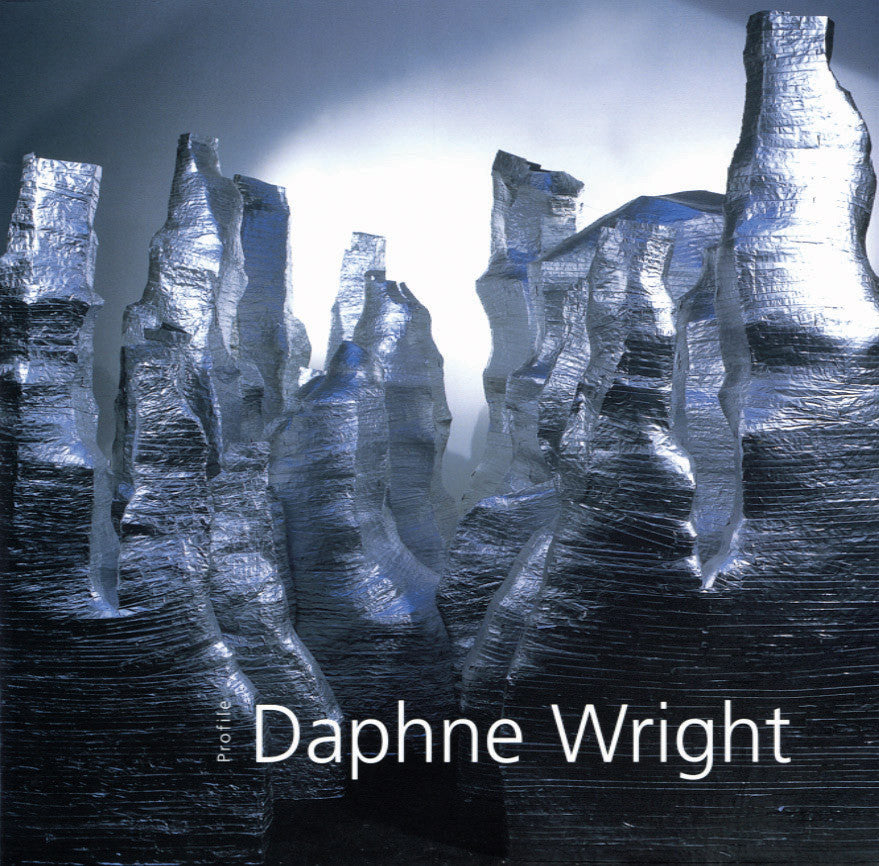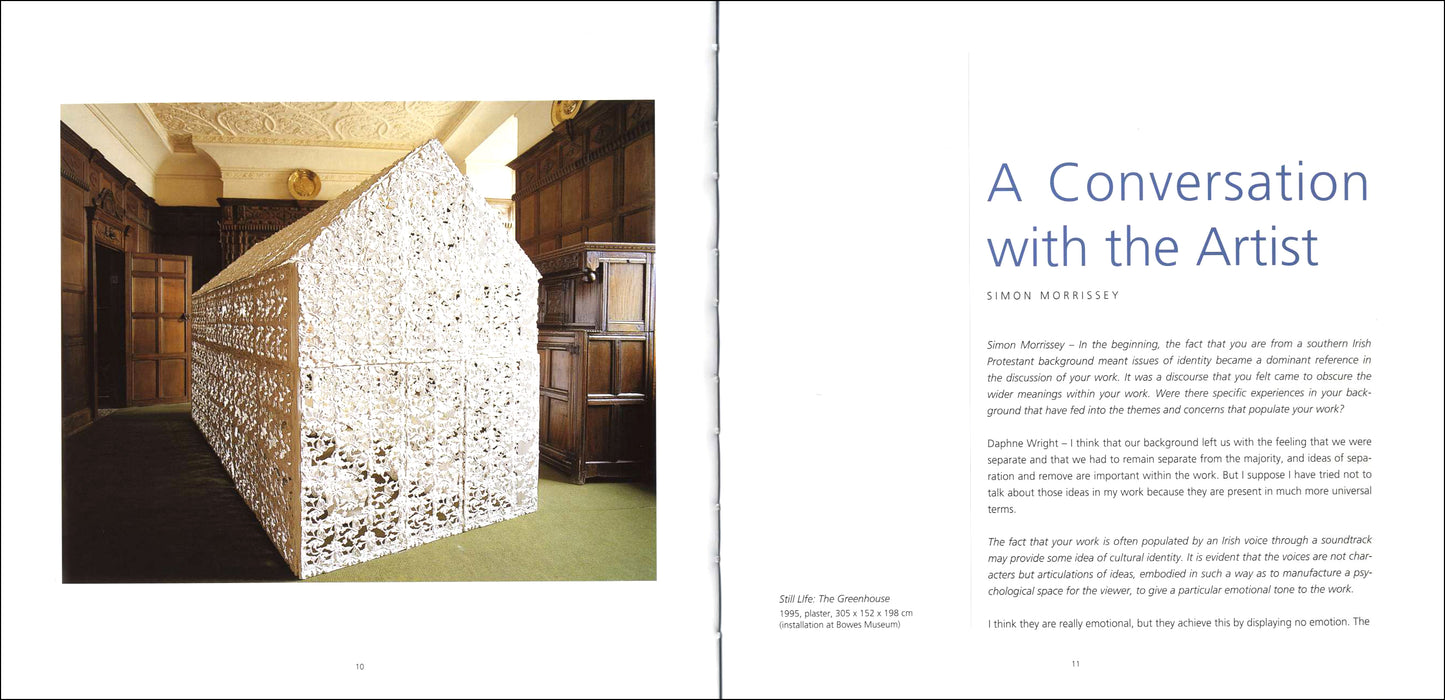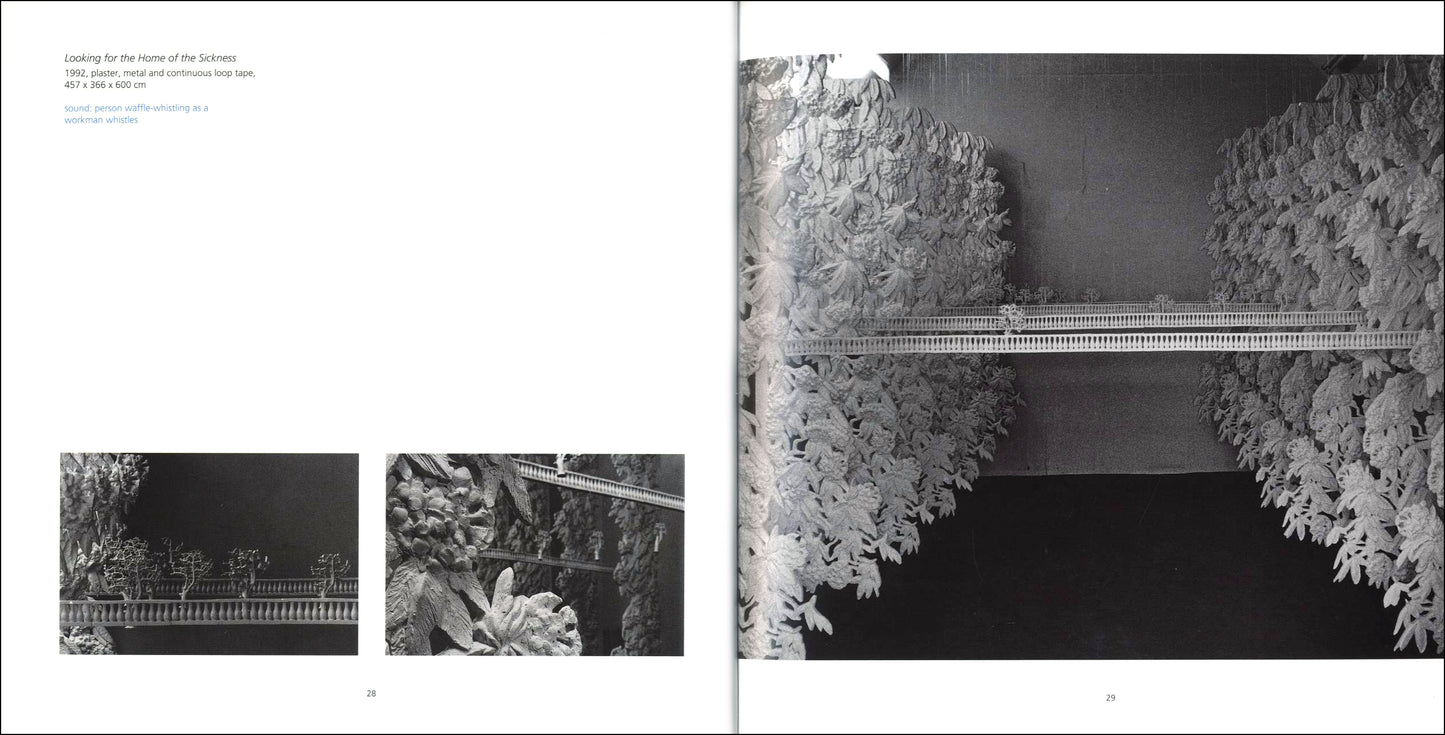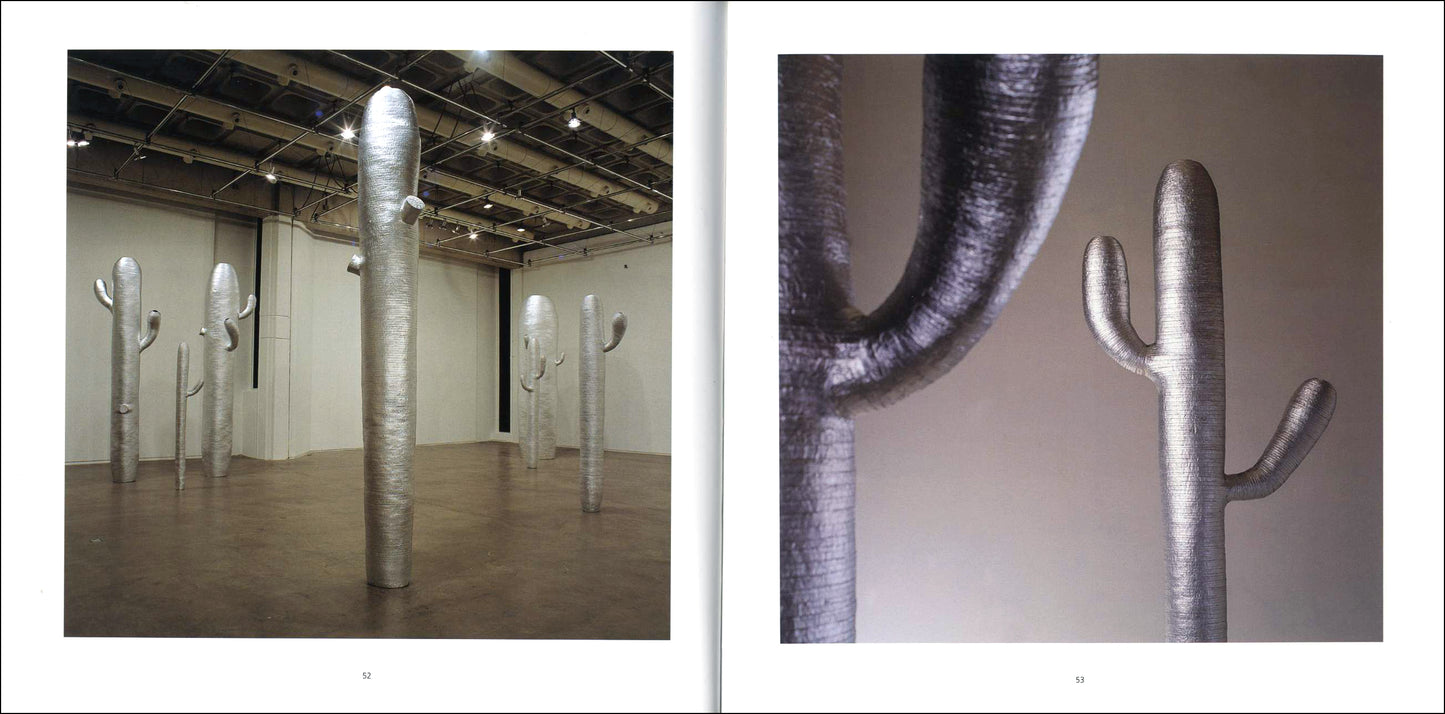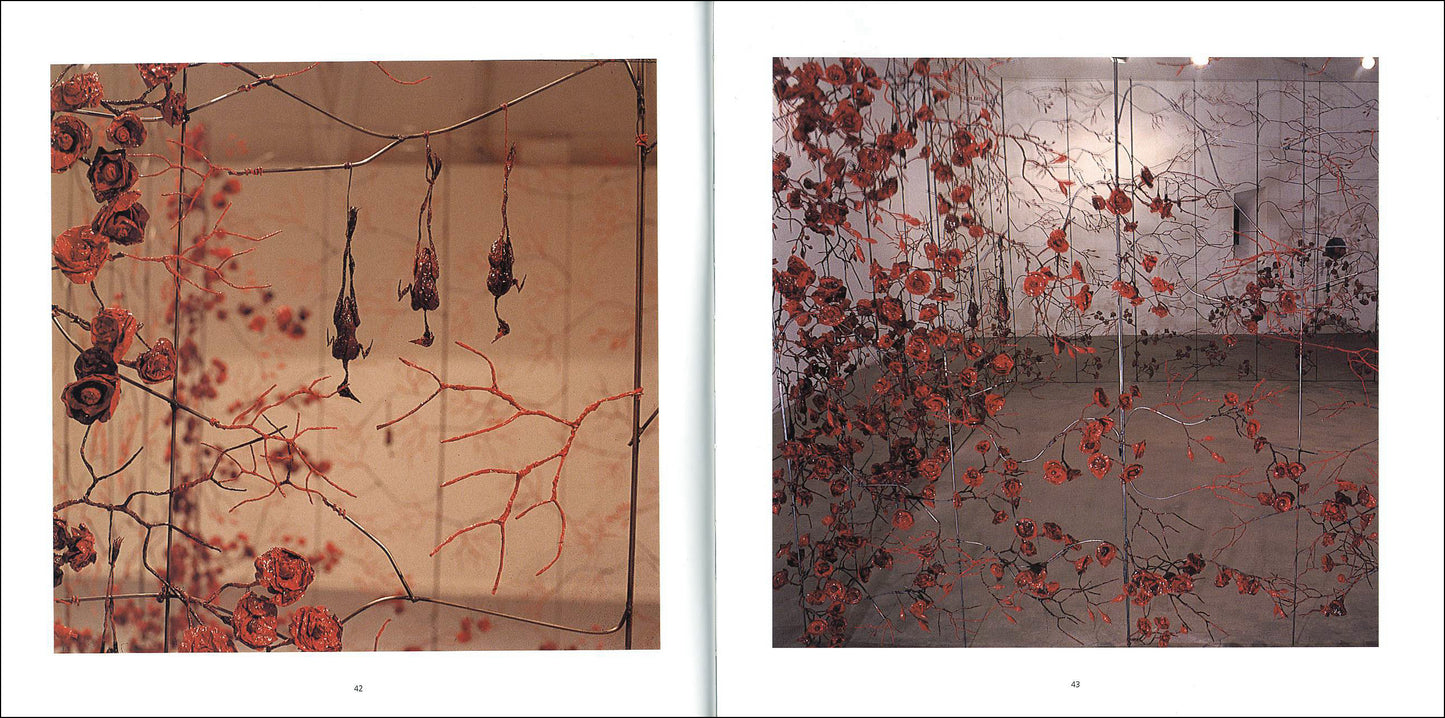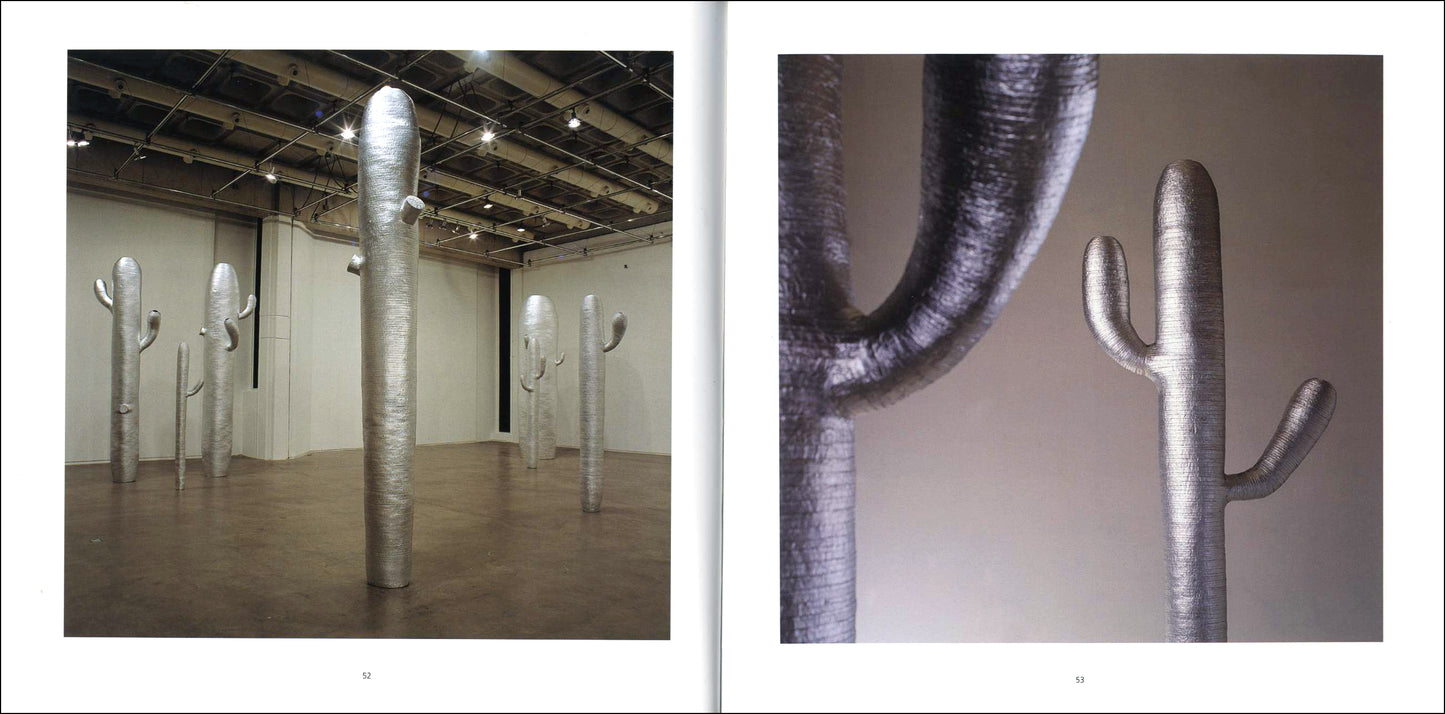Gandon Editions
Profile °23 – DAPHNE WRIGHT
Profile °23 – DAPHNE WRIGHT
Couldn't load pickup availability
Share
essays by Penelope Curtis, Isabel Nolan; interview by Simon Morrissey
ISBN 978 0948037 269 84 pages (paperback) 22.5x22.5cm 96 illus
This book is a retrospective look at the work of the sculptor and installation artist Daphne Wright. It features and in-depth essay and extensive interview with the artist.
EXTRACTS
"When Daphne Wright was a student she followed the work of Robert Wilson, the artist, theatre director and designer, and now, looking back on about fifteen years of her work, there is a sense of a largely structured drama unfolding act by act. The long view is clear enough, as if set in separate pools of light, but the close-up view is more tangled, as her characters seem enmeshed in a complicated script. The acts have their own titles and are clearly set in different materials, their theme echoing their making. At the time of the initial staging their meaning is not clearly grasped by the artist, but when it becomes fully understood, she puts it behind her, developing a new theme at first, and then, more slowly, a new language.
After the media of plaster and tin foil came film, and now papier mâché. Wright works on the border between things being ugly and attractive, inchoate and ‘choate’. The very amateurishness of some of her making – using wet and formless materials – allows her to occupy this indeterminate threshold. Once the works become sufficiently presentable (i.e. neither too ugly nor too embarrassing), she shows them. But once she has mastered her material, she abandons it. Her struggle with unmade materials echoes each new struggle with a theme, and finding the language to suit it. Shaping plaster or foil is an activity somewhat akin to learning to speak, finding the sounds and practising the syntax. When she speaks, as it were, in her new language, she speaks haltingly, as if testing her ability. Once she is fluent, she stops speaking. Thus we need to be ready to accept the child-like utterances as fully intentional."
— from the introduction by Penelope Curtis
"People have always commented on how crafted the work is, and there is something almost derogatory in that observation. Initially I think I was offended by that, but then I began to quite enjoy it. People have parameters that they associate with well-crafted work, and often it is that that kind of artist who investigates through material is intuitive rather than conceptual. That was definitely the way it was thought about during my education. With the early plaster work I sickened myself with the craft of it, but I think I have become increasingly interested in messing up those parameters or expectations. There is something compulsive about taking a material to such a point that you torture it. Once you’ve done that, you understand a material."
— Daphne Wright in conversation with Simon Morrisey
"Her works demonstrate an elasticity of thought, an ability to bring about peculiar juxtapositions that go beyond a simple surrealism or a glib postmodern rapprochement of high and low. She also displays a restraint and a trust in the ability of things, of images and sounds, to speak, as it were, for themselves. This intuitive and consciously flexible approach is also apparent in the variety of materials with which she has worked. She moves – easily it would seem – from one medium to the next, attentive always to its potential and limitations. Wright has worked with casting and modelling, with plaster and tinfoil, with film, photography (both found and her own), and frequently with sound. This is not a marker of a self-conscious flippancy or fickleness. Her freehandedness is measured and matched by a doggedness in the crafting of work – the tedious process of making something once and then making it another fifty or five-hundred times. Eventually, when a medium no longer feels fresh or can no longer ‘speak’ of a subject, she moves to something else, learns a new language, and seems to set about discovering its possibilities."
— from the essay by Isabel Nolan
|
CONTENTS SPACES OF THE MIND introduction by Penelope Curtis 4-9 A CONVERSATION WITH THE ARTIST interview by Simon Morrissey 10-17 ONCE MORE WITHOUT FEELING essay by Isabel Nolan 18-24, 73-75 COLOUR PLATES 23-72, 76-77 List of illustrations / Artist’s biography |
